From sawmills to eco-density
In their efforts to rival Copenhagen, Vancouver planners have established their own lineage of all-stars.
May 23rd, 2019

Vancouver in 1984, before it went sky high and became a haven for money-launderers and cyclists.
Ray Spaxman is touted by Larry Beasley as the “Father of Vancouverism” in his 425-page celebration of planning for the downtown peninsula.
Vancouverism
by Larry Beasley, with a prologue by Frances Bula
$39.95 / 9780774890311
Vancouver: UBC Press, 2019
Reviewed by Michael Kluckner
*
 Anyone looking for evidence of Vancouver’s essential weirdness could consider these two events: in 2005, a mayor named Sam Sullivan personally trademarked the term “EcoDensity” for a style of highrise development; and, five years later, a developer called Amacon named a 34-storey condo complex on Homer Street in the city’s downtown for a former public servant — city planner Larry Beasley.
Anyone looking for evidence of Vancouver’s essential weirdness could consider these two events: in 2005, a mayor named Sam Sullivan personally trademarked the term “EcoDensity” for a style of highrise development; and, five years later, a developer called Amacon named a 34-storey condo complex on Homer Street in the city’s downtown for a former public servant — city planner Larry Beasley.
Fifteen years after his departure from the City’s employ, Beasley has produced a 425-page book on his experiences planning the downtown peninsula and False Creek shores, illustrated with 200 colour photos, mainly by him, of a kind of “Vancouver porn” – happy people in the sun-lit parks and tree-lined streets of this urban part of the city, many on bikes, many with children. The cover photo and frontispiece are both of yachts on False Creek with towers in the background; the statement accompanying the latter says that “the experience of Vancouver is one of urban life on the water.”
Written in first person in a chatty style, the book is very much like Larry, a gregarious and charismatic man whose personality helped him build a distinguished career, first as a Vancouver planner from 1976 to 2004 and subsequently with a global practice including a professorship of planning at UBC. His prose is conversational: “Let me pause to introduce”; “I always felt blessed”; “Again, I was at the centre”; “At times, I felt like a juggler.” The famous architect Arthur Erickson was “a dear personal friend.” Beasley’s predecessor, the legendary Ray Spaxman, was “the great hero of [Beasley’s] generation” and “the Father of Vancouverism.” Mike Harcourt was “the best mayor you could have on your side.”
He profusely thanks his many associates, including his co-director of planning Ann McAfee, for their innovations and creativity, and singles out progressive planning-oriented councillors such as Gordon Price for praise.
Beasley — and journalist Frances Bula who wrote the lengthy prologue — provide a workmanlike overview of the precursors of “Vancouverism.” Bula writes of the evolution of the West End and its embrace of high-density living in the 1960s when much of the rest of North America was fleeing to the suburbs, and describes the critical events of 1972 when a proposed freeway system was cancelled and the electorate turfed out the entrenched civic government in favour of the TEAM political party and its humanist view of governing and city building. In came Ray Spaxman as Director of Planning and the city never looked back.
Beasley describes in some detail the programs that engaged him and his colleagues in the early part of his career in the 1970s and eighties: NIP and RRAP, parts of the alphabet soup of federal initiatives in the 1970s to stabilize and reinvigorate old neighbourhoods; False Creek South, the utopian village of coops and apartments the City developed between the Granville and Cambie bridges; Granville Island and its mix of cars and pedestrians (although he doesn’t note that it violated civic traffic policies and only existed because the federal government owned the land and had no need to conform to local rules).
Those years were “the golden age” of social housing in the country, he writes. Although it’s outside his urban bailiwick, he mentions the policy changes allowing the legalization of many of the city’s affordable basement suites as a precursor to a discussion on “diversity through social mix.” And he touches on the view corridors that were exemplars of Spaxman’s idea of the public realm.
Very briefly, almost in passing, he mentions the collapse of the city’s lumber-milling industry in the 1960s and 1970s. It was this de-industrialization of the city’s economy which created all the “brownfield” sites where he and his collaborators could work their magic.
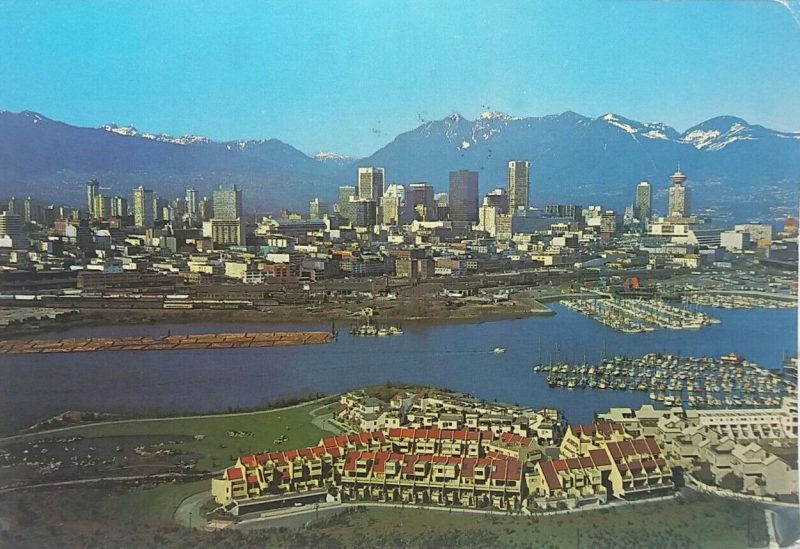
Vancouver skyline, the CPR yards, log booms, and the new residential “False Creek Project.” Postcard stamped 1982
Brownfield is the key to understanding this book: Beasley’s first phase of “Vancouverism” involved the redevelopment of areas that were largely abandoned. His tabula rasa in the post-Expo years was the old Canadian Pacific Railway yards (the Expo Lands) and the adjoining remnants of the working-class Yaletown district south of the city’s commercial and retail centre. The area was effectively empty, the only population being a powerless thousand or so souls living in scattered frame houses, small apartments and a handful of hotels south of Georgia Street.
To attract the attention of the development community and potential buyers, it helped that these areas were on or near the waterfront, in the same way that the West End had retained much of its charm throughout its scruffy rooming house decades with its framing by park and water. This was no Metrotown with towers bordering a straggling landscape of light industry and stucco bungalows. Besides, as he notes, Vancouver’s minuscule economy couldn’t attract enough business to fill all the brownfield south of the city’s office centre. Residential development became the key to its revitalization.
Postindustrial False Creek. Building heights have been set to establish a certain overall profile of buildings with artful punctuations, all against the mountain backdrop. Photo by Larry Beasley
What did this new world look like? The point tower is “an iconic image of Vancouverism,” he notes, while referring to the “quest to populate the inner city with complete communities.” The problem with earlier examples of high-density housing was that they didn’t “touch the hearts of people,” so the City set out to “make the living situation stylish” and “broker people’s preferred experience.” He describes this as “experiential planning” – a kind of consumerism that is “about living fully and joyfully in public space.” “Living our dream” is another expression he uses when describing the outcome.
Why did it all end up looking the same, at least from a distance? Although he notes that “Vancouverism is all about physical design,” he denies that the City’s guidelines were too prescriptive. “Peer pressure” was responsible for the sameness of the architecture, he writes, which reminded me of Michael Geller’s quip that “developers make sheep look like free-thinkers.” However, as he writes elsewhere, “the public authority wants to be an integral part, maybe even an equal player, with the private sector in designing and detailing the development of the city.”
One breakthrough for “Vancouverism” was the townhouses in the podiums, he explains. Another was the creation of character through the provision of local shops that brought people out on the streets into the “rich mix of land uses.” Beasley does acknowledge that some of the podiums in newer buildings are gyms and pools for their residents, with some buildings presenting a five-storey streetwall that diminishes the pedestrian experience.
Clearly, these were neighbourhoods for new people, some of whom were new to Vancouver or had cashed out, say, on a west-side home in exchange for a pied-à-terre when they weren’t in Palm Springs or Maui. Beasley recalls that “applying the neighbourhood template has been a lot like cooking” for “the special tastes of our hoped-for guests.” He notes that the success of the community is partly due to the interconnected network of parks – especially the seawall. How, the reader asks, can this translate elsewhere?
The Roundhouse Turntable Plaza, which opened in 2012, provides a stage setting for live performances, weddings, and other community events. Photo Larry Beasley
Almost resentfully, he refutes the idea that the tower-on-podium design originated in Asia, describing it instead as having an “organic, locally-based genesis.” This is a different analysis from scholars such as retired UBC geographer David Ley, the author of Millionaire Migrants: Trans-Pacific Lifelines (2010), who described the north shore of False Creek in a recent lecture as “an Asian city.”
One interesting part of the book concerns the planning for schools in this new high-density world, and the author’s satisfaction that they are packed with children. (He also notes with a wink that they did not plan for any places of worship, reasoning that there were enough survivors of that genre nearby.) However, he doesn’t venture into issues of crowding in the small units – one commenter on Gordon Price’s urban-affairs Price Tags blog wryly described his condo-nundrum when he allowed his daughter to set up her dollhouse in the living room, considerably limiting the use of the room by the adults. The ongoing “5kids1condo” blog of housing activist and political candidate (and prolific Dad) Adrian Crook is another exploration of the subject.

Separated bikeways characterize the new Vancouver. The Hornby bikeway is crowded during peak hours. Photo by Larry Beasley
Another good section describes “taming the car” and providing for alternative transportation modes – transit, bikes, and a good environment for walking, all requiring a reasonable level of density to achieve. Like some commentators, he is wary of the ride-hailing behemoths Uber and Lyft, worrying that they will increase traffic congestion and reduce transit use – a step back from the environmental goals that are part of his “Vancouverism.”
Addressing the question of how the City could create such a rich urban environment within the free-market Canadian system, Beasley explains that “the power of Vancouverism” increased land rights in return for public amenities. “We at city hall created that extra wealth, like magic” through land lift – that is, by offering upzonings, which allowed developers to build bigger and higher in return for what he coyly describes as a “contribution” from them. However, he reassures the reader that the process is “discretionary” and “transactional,” all intended “to realize rich public expectations.”
He mentions the Contemporary Art Gallery as an example of this bonused community amenity, and calls it “premium placemaking.” In the years since his departure from the City, these Community Amenity Contributions (CACs) have become controversial, partly within the development community due to the opacity of the negotiation process and the sense among some that a chosen few were paying less than others, and partly within City governance because of the City’s increasing dependence on them, fuelling, as some contend, a never-ending demolition and development cycle. Beasley offers little political analysis or comment on the controversy – it’s not his style.
The debate about density runs through the book like a river. Both Bula and Beasley write of the public’s aversion to it, reflected in the Harland-Bartholomew plan for Vancouver completed in the late 1920s, without noting the public-health concerns that dominated urban planners at that time (chronicled in Jill Wade’s Houses For All: The Struggle for Social Housing in Vancouver, 1919–1950, UBC Press, 1994). Avoidance of large-scale tenements by reducing the size of apartment buildings to the “Ten-Suiter” or “Three-Storey Walkup” became the planning orthodoxy for 30 years, resulting in very livable, walkable parts of the city such as South Granville and Kitsilano that receive little attention.
Even when describing the West End’s 1960s highrises, neither Bula nor Beasley acknowledge the amount of landscaping they have around them – ample setbacks, gardens, sometimes outdoor pools – and how low-density they actually are compared with the intensity of the “Vancouverism” examples that are the core of the book.
At one point, Beasley remarks that density “is just too much of a dirty word” and that moderate, non-highrise forms “may be enough to achieve all we need for sustainability, economic efficiency and vibrancy.” This accords somewhat with his later “Vancouverism 2.0,” the Southeast False Creek area of midrises that most people still refer to as Olympic Village.
That midrise form of 50-year-old 10 to 12-storey buildings is common in the South Granville and Kerrisdale neighbourhoods. He mentions a good recent example as indicative of “Vancouverism’s” adaptability: Arbutus Walk, the former light-industrial area around the old Carling O’Keefe brewery west of Arbutus at 12th, developed with relatively lowrise buildings following sustained local resistance to the “Vancouverism” highrise typology proposed for it.

Arbutus Walk in Kitsilano, with a reconstructed brick tower from the Carling O’Keefe brewery that sat on the same site
As for the 65 percent of Vancouverites in other types of neighbourhoods, he confesses that “we didn’t really care much about the suburbs or their problems,” but suggests late in the book that a “Vancouverism 4.0” or “ecodensity” will transform the suburbs, likely around transit nodes and malls. This is already happening in Burnaby, Port Moody and Surrey but without the fine-grained street design that makes his downtown communities so attractive to pedestrians. Negative public response in established Vancouver neighbourhoods such as Grandview during its recent planning process, and in the Arbutus Walk neighbourhood that Beasley describes, indicates that the towers of “Vancouverism” will be a hard sell.
The closest he gets to politics is his admiration for Canada and Canadian institutions – he grew up in the USA. “Canadian culture fostered Vancouverism,” he writes, implying that Vancouverites could live in towers but still come down and mingle on the street, unlike, say, the sort of wealthy Americans living in “strange isolation,” in Saul Bellow’s words, in Lake Shore Drive apartments in Chicago in the 1970s.
“Vancouverism” could only be invented, he writes, “because it is a city of immigrants without a controlling Establishment.” And yet, it is exactly that control group — the west-side homeowners who consistently outvoted everyone else and kept centre-right parties in power for so many years — that allowed the planners to proceed. This was the bargain: go ahead and develop the brownfields, do what you want elsewhere in the city and support our developer friends, but leave us alone with our single-family homes and gardens in “the great house reserve,” as UBC sociologist Nathanael Lauster called it in his 2016 polemic The Death and Life of the Single Family House: Lessons from Vancouver on Building a Livable City.
When he comes out in favour of the city’s at-large voting system, Beasley chooses to ignore the class-based dominance of Vancouver’s historical voting. However, he is on solid ground when he speaks of the advantage Vancouver has had as an independent entity not amalgamated into a metropolitan style of government such as the one that runs urban Toronto from the suburban 905 area code.
The book does get a little into post-Beasley civic issues, again without naming names or engaging in any substantive political analysis, on the issues of exclusivity and unaffordability, which he finds “disheartening.” He provides a good explanation of the shortcomings of government policy and its “narrow-mindedness” in subsidizing housing only for poor people, and suggests that a Crown Corporation (that is, a provincial entity) may be required to provide affordable housing for the middle class.
He eventually despairs that “Vancouverism” is not meeting its intentions in providing mixed communities, that there is a “dominance of the richest” and an “urban malignancy” – the over-success of housing versus all other uses of land. But as he talks about land values soaring he is mute on the mixed messages the City has sent about spot rezonings and the encouragement of speculation. “Bringing to heel the monster of unaffordability” is the big issue, but he doesn’t venture into the role senior governments must play. “The biggest black eye,” he writes, is Vancouver’s Downtown Eastside.
As a reviewer, I am wary of writing about what a book is not — of writing, as publisher Mark Stanton used to say, about camels when the book is about horses. That said, beyond the lack of political analysis there are two blind spots in Beasley’s story.
The first is the use of the word “sustainable” to describe a forest of slender glass-covered concrete towers. Indeed, some of the residents may be able to move around with a smaller carbon footprint than suburbanites can, but, for example, a BC Hydro study released after the book went to print indicates that newer condo towers consume a lot more energy than either older ones or rental buildings, largely due to the amenities in newer buildings such as pools, hot tubs, party rooms, fitness centres and movie theatres, not to mention elevators and the heating and cooling requirements of buildings that have so much surface area compared with their interior volume (because they are tall and skinny).
The shopping district at Pacific Boulevard and Davie Street. Vancouverism suggests a walkable scale. Photo by Larry Beasley
The jury is out on whether the wall-window assemblies – the glassy skin of the buildings – will last, the bet being that Toronto’s towers will fail first due to the more severe heating and cooling they face in their climate. University of Waterloo Professor John Straub was quoted in a Globe & Mail story in 2014 as saying, “With these buildings, both skin and the mechanical systems are going to have to be redone in a 25-year time frame. The concrete structure will be there for a long time but in 20, 25 years time, we are going to see a lot of scaffolding on the outside of the buildings to replace the glazing, sealants and the glass itself.” Will that cost be as drastic as that of the “leaky condo” crisis that bankrupted strata residents a generation ago?
The second blind spot is the lack of any analysis of ownership – of the condominium itself and the impact of the Strata Titles Act of 1966 which enabled “the social space of gentrification, brought about by an economic restructuring that increased the affluence of some, but displaced others,” in UBC law professor Douglas Harris’s words.[1] Overseas condominium ownership, as described by Harris and David Ley in their various papers and books, became the perfect safety-deposit box for investors and is not discussed at all, even as Beasley wrestles with the problems of affordability and the lack of diversity.
Throughout Vancouverism, there is little use of the word “condo” and in fact it doesn’t appear in the index. Neither does “rental.” “Apartment buildings” is the index item, and the reader cries out for some analysis of the turmoil the city has been undergoing, examined, for example, in the work of SFU’s Andy Yan on vacant units, renters vs. owners, lot assemblies, and all of the other issues that have animated public discourse in the past several years.
Was “Vancouverism” locally grown but overwhelmed by issues outside the City’s control? Which came first? Overseas property investment when the provincial government sold the Expo Lands to Hong Kong’s Li Ka-shing? Or, did the beauty of the development on the Expo Lands, initiated and crafted by local hands, eventually attract the speculative flood? The reader must look elsewhere for the answer.
Who’s not included in his history of “Vancouverism”?
Architecture critic Trevor Boddy, for one. Boddy curated “Vancouverism: Architecture Builds the City,” presented as part of the 2008 London Festival of Architecture and at the Canadian Cultural Centre in Paris in 2009, and subsequently at the new Woodward’s complex during the 2010 Winter Olympic Games.
Absent from the subject of reducing homelessness is architect-developer Michael Geller, a tireless promoter of modular housing. A third is Lance Berelowitz, author of Dream City: Vancouver and the Global Imagination, a 2005 book that captured a wave of enthusiasm for the city’s linear foreshore parks and the nearby pleasures awaiting the urban flaneur.
In his conclusion, Beasley writes that “Vancouverism was a magnificent blossoming aspiration that made it to ground in record time, transforming and repositioning the whole city [emphasis added] and redefining its lifestyles” while acknowledging that its proponents were “blind to some worrisome vectors of change, such as escalating land and housing costs.” The whole city? Perhaps a quarter of it, and about five percent of Metro.
He writes about “coming to a consensus” on “the image of Vancouver.” The 2018 election certainly reversed that, with the pro-development, pro-“Vancouverism” Vision slate failing to elect a single member.
Public art as a neighbourhood amenity. Raven and Orca sculptures at southeast False Creek by Kwakwaka’wakw artist Corrine Hunt. Larry Beasley photo
If the book had come out, say, in 2012 in the wake of the Olympics, it would have caught a wave of triumphalism and civic pride, but instead it feels curiously dated. Partly this is due to the textbook tone of some chapters, which will be useful to planners who are looking for templates to reinvigorate their brownfield sites. In the epilogue, Beasley alludes to the length of time he spent with the book, thanking Francis Bula for writing the prologue several years after he asked her.
Criticisms aside, this will be the definitive insider’s account of the creation of Vancouver’s famous skyline, its downtown neighbourhoods and its mix of natural beauty and urbanism. John Punter’s The Vancouver Achievement (2005, UBC Press) covered the entire city but gave a more dispassionate view of the projects Vancouverism covers. The dedicated urbanist should also check out Mike Harcourt and Ken Cameron’s City Making in Paradise: Nine Decisions That Saved Vancouver (2007, Douglas & McIntyre).
Larry Beasley was central to the transformation of the downtown peninsula into an attractive residential area, a feat acknowledged by the development community with “The Beasley” condos on Homer Street. His awareness of affordability and diversity challenges, and the plight of the homeless, gives the text a human touch that makes it more than just a manual for planners.
*
Michael Kluckner is the author of several illustrated books on Vancouver’s history and heritage buildings, and enjoyed destroying the city in his graphic novel 2050: A Post-Apocalyptic Murder Mystery (Midtown Press, 2016). He is president of the Vancouver Historical Society and chairs the Vancouver Heritage Commission.
*
The Ormsby Review. More Books. More Reviews. More Often.
Editor/Designer/Writer: Richard Mackie
Publisher/Writer: Alan Twigg
The Ormsby Review is a journal service for serious coverage of B.C. books and authors, hosted by Simon Fraser University. The Advisory Board consists of Jean Barman, Robin Fisher, Cole Harris, Wade Davis, Hugh Johnston, Patricia Roy, David Stouck, and Graeme Wynn. Scholarly Patron: SFU Graduate Liberal Studies. Honorary Patron: Yosef Wosk. Provincial Government Patron since September 2018: Creative BC
“Only connect.” – E.M. Forster
Endnote:
[1] Douglas Harris, “Condominium and the City: The Rise of Property in Vancouver,” Law & Social Inquiry 36 (2011), pp. 694-726.

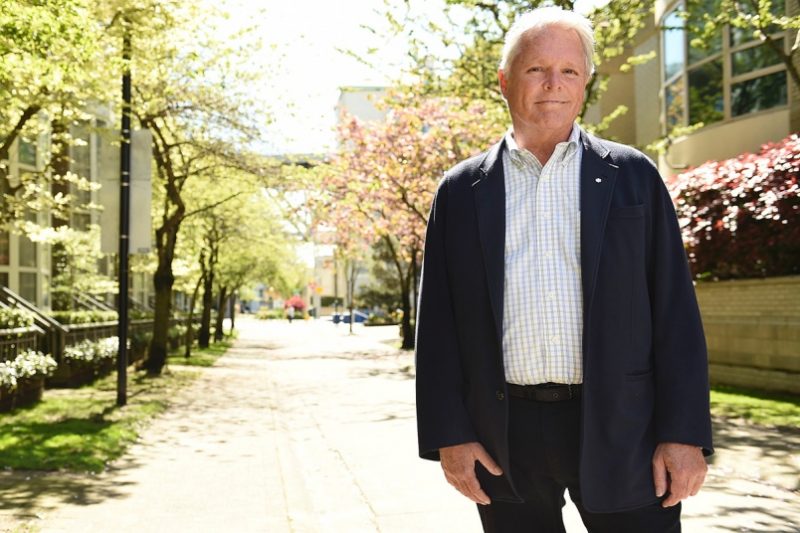
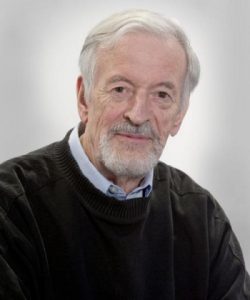


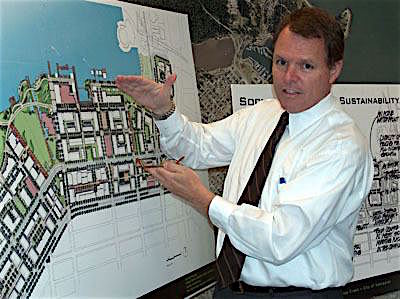
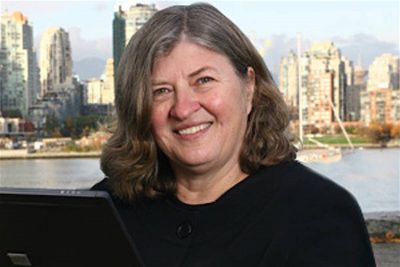
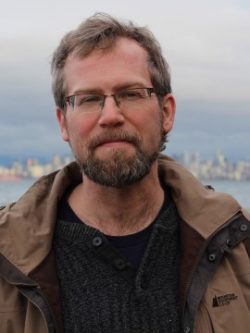
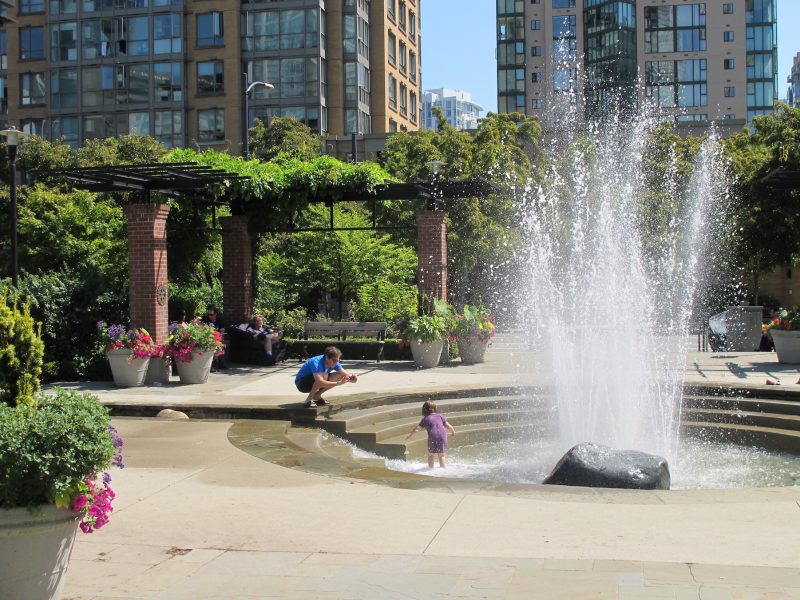

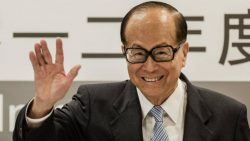



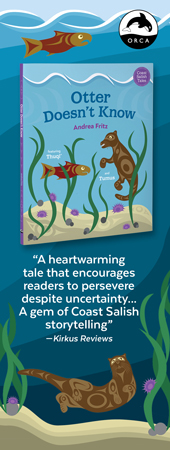
Leave a Reply